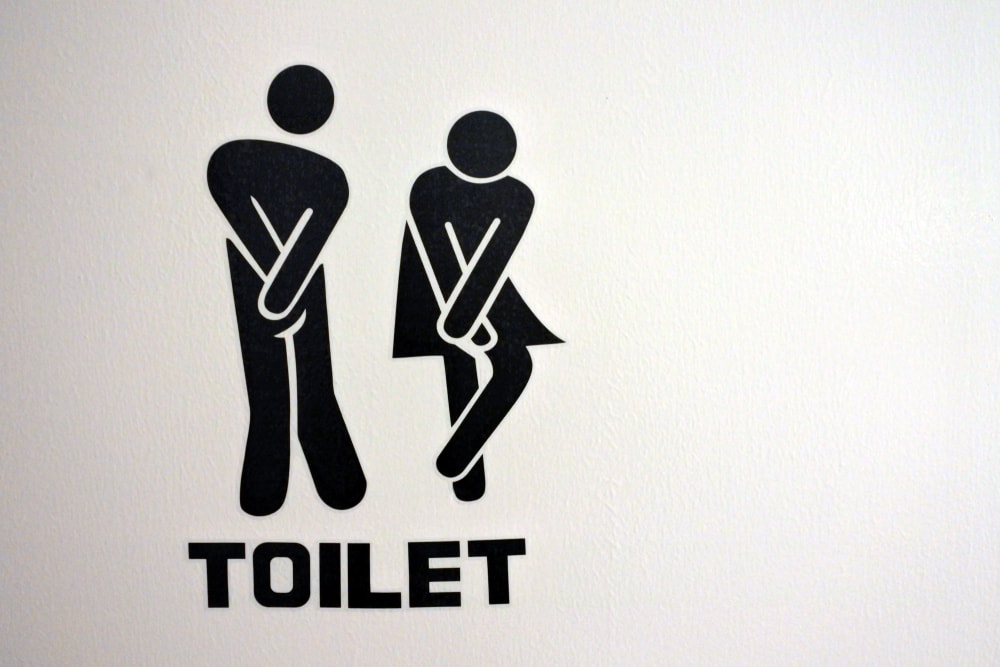What Does Your Back Pain and a Nerve in Your Ankle Have to Do with Your Bladder?

Credit: Shutterstock
For the last decade or so I’ve realized that there’s a very big cross-over between patients with back pain and bladder problems. However, for many years this connection was ignored by urologists. Now, there are new devices that take advantage of this connection. So let’s dive into how a nerve in your ankle may impact bladder urgency.
What Is Bladder Urgency?
An irritated bladder can cause all sorts of problems. This can cause you to feel like you need to pee when you really don’t and thus can lead to more frequent urination (frequency). Many times this is caused by a bladder infection (especially in women), but what happens when that’s ruled out? In that case, many patients get a diagnosis of interstitial cystitis. These patients commonly get placed on medications to relax the bladder or to deal with the pain. However, what if the problem was really irritated nerves?
The Sacral Nerves and the Bladder
I first noticed this connection about a decade ago when back pain patients who had been treated with a caudal epidural would come in and tell me that their bladder issues were resolved in addition to their back pain. After that, asking about bladder problems like urgency or frequency became part of my standard initial evaluation questions. Once I began to ask more often, I was surprised by how many back pain patients had these issues and how many times they would go away after we successfully treated the low back.
Why would a caudal epidural help? The bladder is innervated by the sacral nerves (S2-4). These are spinal nerves that exit your tailbone and can be irritated by things like a central disc bulge at L5-S1. When irritated, they can cause bladder symptoms. These same nerves can also cause low back pain.
How is this issue treated? In these patients, I inject platelet lysate (growth factors and cytokines from platelets) into the spinal canal in the tailbone using precise x-ray guidance, thus bathing these nerves. Once they’re no longer irritated, the bladder symptoms generally go away.
When I first discovered this was happening, the concept was so “out there” yet made so much sense that I figured that eventually, we would see this be a “thing” one day. However, since our practice was focused on back pain patients and not those with diagnoses like interstitial cystitis (bladder pain), I moved on. That was until I was surprised this week.
Treating the Bladder through an Ankle Nerve?
This treatment is called “Posterior Tibial Nerve Stimulation” (PTNS). The physician inserts a thin needle near the tibial nerve at the ankle. A stimulator sends electrical impulses through the needle to the nerve, and these impulses are carried to other nerves in your spine. Given that shared bladder and tibial nerve innervation, the signals block the bladder nerves.
The problem? Treating the back through the ankle is inefficient. Hence, if you have back pain and a diagnosis like interstitial cystitis, bladder urgency, or frequency, it’s far easier to treat your back and kill two birds with one stone!
The upshot? If you know someone who has back pain and bladder problems, the solution may be far easier than taking medications to relax your bladder, enrolling in interstitial cystitis rehab programs, or stimulating the tibial nerve at the ankle. It’s usually treating your back by targeting the nerves both causing that issue and your bladder problem!
__________________________________________
References:
(1) de Wall LL, Heesakkers JP. Effectiveness of percutaneous tibial nerve stimulation in the treatment of overactive bladder syndrome. Res Rep Urol. 2017;9:145-157. Published 2017 Aug 14. doi:10.2147/RRU.S124981
(2) Yamashiro J, de Riese W, de Riese C. New Implantable Tibial Nerve Stimulation Devices: Review of Published Clinical Results in Comparison to Established Neuromodulation Devices. Res Rep Urol. 2019;11:351-357. Published 2019 Dec 23. doi:10.2147/RRU.S231954

If you have questions or comments about this blog post, please email us at [email protected]
NOTE: This blog post provides general information to help the reader better understand regenerative medicine, musculoskeletal health, and related subjects. All content provided in this blog, website, or any linked materials, including text, graphics, images, patient profiles, outcomes, and information, are not intended and should not be considered or used as a substitute for medical advice, diagnosis, or treatment. Please always consult with a professional and certified healthcare provider to discuss if a treatment is right for you.
